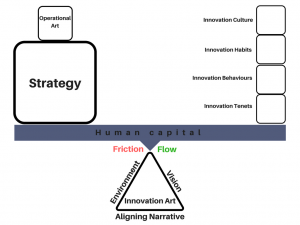There is only one thing stronger than all the armies of the world: and that is an idea whose time has come.
– Victor Hugo
Operational Art is a 20th century theoretical military construct that bridges the conceptual divide between strategy and tactics, linking military effects to political objectives. The Cove has published a considerable amount of Operational Art content, starting with an introduction to Operational Art that is well worth the investment of time to read.
Complexity > Predictability
Our climate of rapidly accelerating technological change has created a forcing function to increase the velocity of military decision making cycles (as described by the V-Twin Effect). This is due to a combination of Moore's Law and the dominance of commercial off the shelf (COTS) technology accessible to threat actors.
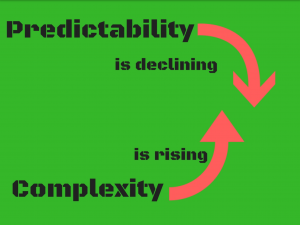
A relevant example is the alarming decline in organisational longevity on the S&P 500. Comparative and decisive advantage has declined from a tenure of 90 years in 1935 to 18 years in 2014, and projected to fall further to a mere 12 years by 2027. Continuous innovation by agile competitors to defeat and destroy legacy organisations, such as the accelerating disruption of S&P rankings, is beneficial to the economy. But sovereign nations face a 'no fail' strategic problem, and therefore their defence forces are compelled to continually innovate and develop in order to maintain an advantage.
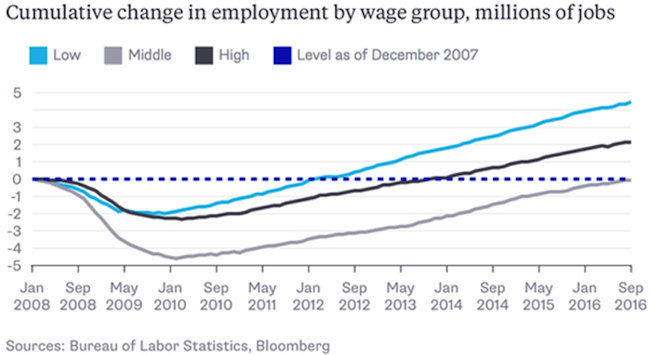
This article explores the growing necessity for integrating innovation vision into a unified military theory, translating innovation from commercial to operational.
Effective military application of Innovation Art in the form of networks, platforms, & pipelines, operating within a high performance innovation environment, must be achieved and leveraged to rapidly support execution within fast evolving operating environments.
Innovation Art: Describe > Define
Innovation Art describes the human centric and process driven application of military resources to achieve strategic objectives. It requires an innovation environment designed to reduce friction and enhance flow. Innovation Art is the vision that links cultural tenets to strategy. It is the culmination of behaviours and habits that are constantly being refined across all innovation wave horizons that acts as a catalyst for executing strategic intent at velocity.
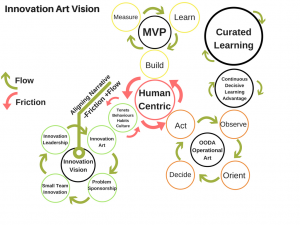
Innovation Art: Key Elements
- Human centric
- Despite rapid technological disruption being the forcing function, it is our human capital that forms our centre of gravity. Humans provide the ability to rapidly deploy the 3 horizons of growth in support of strategic objectives. Clausewitz said, 'The more a general is accustomed to placing a heavy burden on his/her soldiers, the more he/she can depend on their response.'
- Process driven
- Innovation is a process that provides rapid and iterative order to increasing complexity as a result of technological disruption and evolving threat actors that leverage it.
- The iterative nature of innovation continually reduces friction and enhances flow.
- Process development is built from the bottom up.
- Environment designing
- Innovation demands a nurturing and supportive environment focused on four key pillars:
- high trust
- shared purpose
- interconnectivity
- empowered execution.
- Habits are established from consistent behaviours that are built on a foundation of innovation tenets and enforced within a habitat of high performance.
- Innovation demands a nurturing and supportive environment focused on four key pillars:
- Friction reducing
- Clausewitz introduced the concept of friction as a hindrance to the execution of strategy, describing it as the 'myriad of small, but collectively numerous things that happen that cannot be foreseen or planned for, and which cause leaders to spend time on unforeseen decision making.' Clausewitz noted that no military or organizational unit can be thought of as a single or solitary piece that works in isolation: 'Each part is composed of individuals, every one of whom retains his potential for friction.'
- In the books Team of Teams and One Mission, authors General Stan McChrystal (Retired) and Chris Fussell, describe the transformation of the Joint Task Force (JTF)/Joint Special Operations Command (JSOC) as a conscious command decision to reduce friction points using an aligned narrative.
- Clausewitz said 'Everything in war is very simple, but the simplest thing is difficult.' The main effort of command when it comes to innovation friction is simple, if not easy – reduce it.
- Flow enhancing (Velocity of implemented Innovation = Flow)
- Flow is the antithesis of friction.
- The Velocity of Implemented Innovation is the measured time from idea (flash!) to deployment (bang!).
- Deployment > Employment
- The purpose of Innovation Art is to sustain a decisive advantage
- Decisive advantage is achieved through deployment of innovation, not through
employment in innovation theatre.
- Tenets over Tools
- Innovation tenets must be designed to inform behaviours that embed as habits. In doing so, they promote a culture aligned to support overarching strategy.
- Tools are not omni-purpose. Each methodological tool exists within a greater toolbox and are selected based on utility in facilitating learning and/or deployment of solutions. These include:
- These are methodological tools that largely share a common core, Minimum Viable Product (MVP) architecture, of data driven experimentation and iteration.
- Tactical command determines which tools are employed.
- Operational command determines the tenets that inform the breadth and depth of the toolbox.
3 Horizons of Innovation (akin to 3 levels of war: tactical, operational, strategic)
- Exploitation (tactical) of the existing organisational model.
- Extension (operational) of the existing organisational model and core capabilities.
- Exploration (strategic) of new capability and disruptive opportunities/threats.
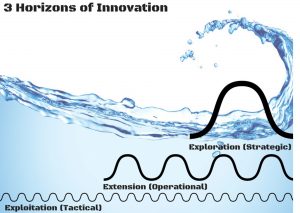
Innovation Art requires 4 questions to be answered:
- What innovation environment will achieve the strategic objective?
- What sequence and simultaneity of actions will achieve the innovation environment required?
- How should command apply limited resources to accomplish the sequence and simultaneity of innovation action?
- What is the aligning command narrative to answer questions #1 to #3?
How is Innovation Art executed?
- Simple to understand by all.
- Adaptive, not a rigid cookie cutter or check list.
- Descriptive, but does not define solution as per mission command.
- Distributed, command sees little of the individual tactical innovation exploration.
- Iterative, always execute with good enough today, iterate towards excellence tomorrow.
- Prescriptive, established, accepted, and enforced command innovation narrative.
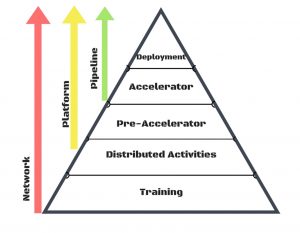
Conclusion
Operational Art is not about one decisive battle, nor is Innovation Art about one decisive innovation.
Innovation Art is designed to support Operational Art. When the theories are integrated and unified, they possess one distinct difference. Operational Art is terminal while Innovation Art is perpetual and without a culminating point (as formulated by Clausewitz) in order to continuously sustain a decisive advantage. Operational Art designs campaigns, Innovation Art designs the culture.
Innovation Art positively shapes the continuous, relentless and accelerating requirement for innovation. A single innovation is rarely decisive, but consistent and cumulative innovation can be.
Innovation Art is an exploratory vision towards the creation of a rapid and continuous innovation ecosystem informing and aligning with strategy.
If war is the continuation of politics as described by Clausewitz, then decisive military advantage is the continuation of innovation. Innovation Art integrated within a unified military theory is a catalyst to positively disrupt the status quo.
